Crete has a long and illustrious history: birthplace of Zeus, king of the Greek gods, and the seat of the Minoan ruler King Minos who is said to have ruled from a palace of 1,000 rooms.
The largest Greek Island, and nearly the one nearest to Africa (bar it’s tiny neighbour Gavdos) it’s also the best for year-round living, with its mild winters allowing the odd December dip in the sea. Thankfully it has not had any of the forest fires that Rhodes and Corfu are experiencing and its busy beaches and restaurants this week suggest it might be a beneficiary, according to local news.
The Germans have always been the most prolific visitors to Greece but in 2022 the British overtook them as the biggest group of foreign tourists
British tabloids are warning of a ‘Level 5’ fire risk on the island. However, my local source tells me that these are fairly normal for the island when there are high temperatures combined with wind.
You won’t find the tiny photogenic fishing ports of the Cyclades on Crete, nor the upscale beach clubs of Mykonos or the Ionians, but you will find verdant rolling hills of olive groves and vineyards around the snow-capped mountains that divide the island from north to south.
There’s a saying in Greece: ‘Go to Santorini to fall in love, to Mykonos to party and to Crete to eat.’ The foods of Crete are olive oil, fish, honey, yoghurt, cheeses and lamb – you can do a cookery course, crush olives in an ancient stone and carob-wood press or taste the local wines.
The Germans have always been the most prolific visitors to Greece but in 2022 the British overtook them as the biggest group of foreign tourists. It is seeing more interest from Israel, UAE and Lebanon, too. Because of its central location in the Med, travellers have been stopping by for millennia and Cretan children are taught that its their moral obligation to take care of strangers – they even have a word for it, philoxenia (‘love of strangers’). Latterly some of these have been digital nomads too – Crete is one of the most popular islands for a stint of remote working according to WorkfromGreece.gr. Its modern capital Heraklion is getting a new airport at Kastelli too.
It’s not surprising many visitors have put down roots. There are around 37,470 holiday homes and 44,186 secondary homes on the island, according to the Population and Housing Census 2018, with many owned by Scandinavians, British, Germans and other Europeans.
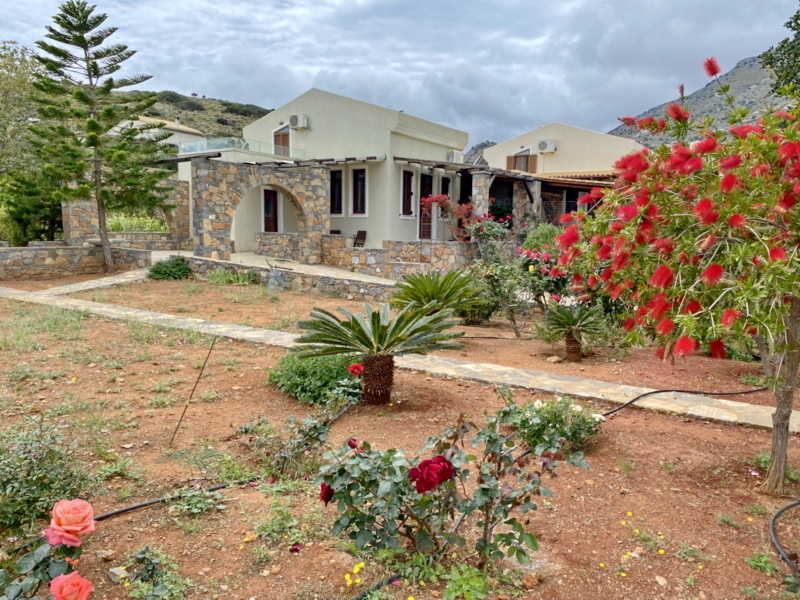
Crete offers a wide array of properties to suit all budgets. Even in Lasithi, in the northeast of the island, where many of the upmarket hotels and villas have been built, you can get a cute three-bedroom house with cornflower-blue paintwork for €135,000, a three-bedroom villa for €570,000 or a luxury villa for €1.75 million.
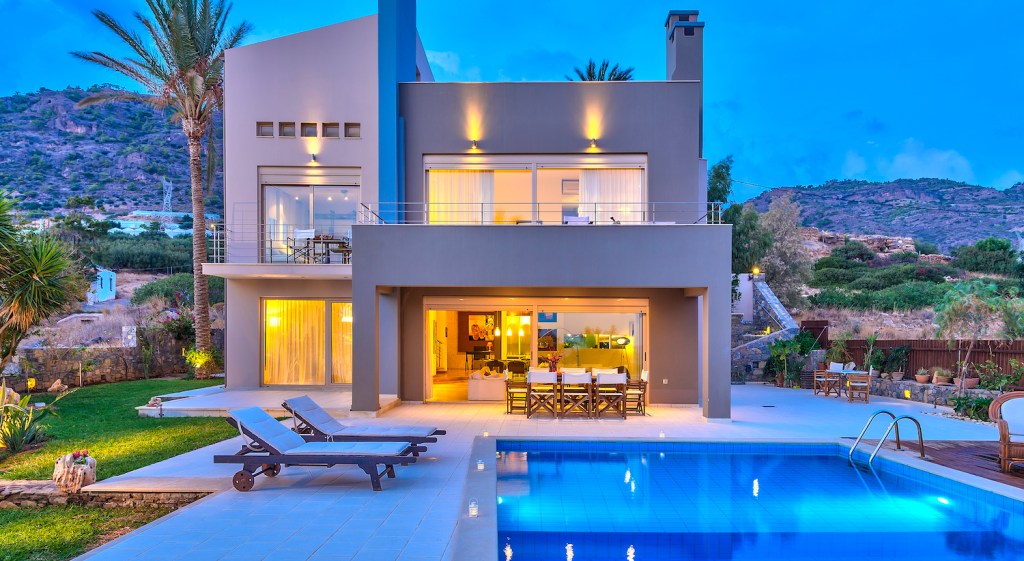
However, Elounda Hills, a sustainable resort, will truly break new ground – after a very long planning process. Over the next few years, 257 properties will be built cascading down a headland with spectacular views across the Gulf of Mirabello towards Spinalonga Island – the former fortress then leper colony of Victoria Hislop’s novel, The Island.
Nothing happens especially fast in Greece (that’s why we like it) and the 138-acre resort has been 20 years on the drawing board for the Athens and Tel Aviv based development company the Mirum Group. But when up and running the resort will generate its own power, desalinate its water, and recycle its own waste.
Owners of the new properties – from a one-bedroom Hilltop Residence at €495,000 to a detached three-bedroom villas from €1.8 million – will be able to take advantage of the Camper & Nicholsons operated marina, beach clubs, kids club, spa, 15 restaurants and a branch of 1 Hotels, the sustainable-focused American chain that will manage residences for owners who wish to rent out their homes to over running costs. Although not until 2026, when the scheme is due to be completed.
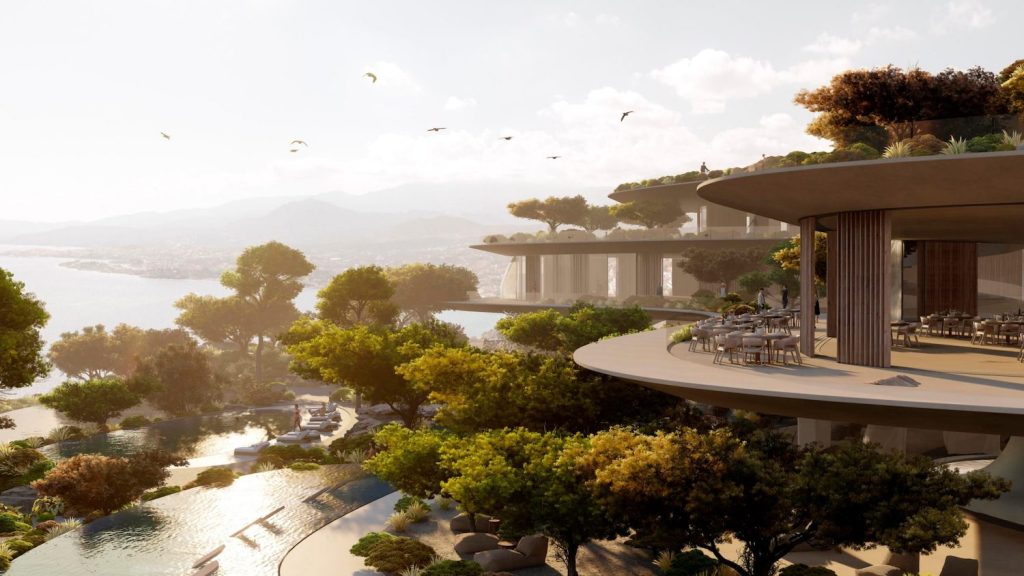
There is certainly nothing yet like Elounda Hills in Crete, never mind Greece, although Crete’s organic farms and wineries, along with local businesses like Biorama (a herb farm making natural cosmetics in bioplastic bottles) make it a natural fit.
Robert Green of the UK sales agent, Sphere Estates, expects the scheme to appeal to the growing number of eco-conscious buyers, as well as those who want a co-primary home in a relaxed and sunny location. Non-EU buyers who wish to spend more than 90 days at a time on Crete will need to get either a golden visa (a residency permit with a purchase of at least €250,000) or a National D Type Visa if they might want to make the move full time.
There’s also a tax incentive for retirees with a tax rate of 7 per cent for a period of 10 years – you must transfer your tax residence to Greece and stay in the country for more than six months a year.
Investors spending around €250,000 for the golden visa are also attracted to the western side of Crete, around Chania, a charming town of colourful buildings, narrow streets and waterfront restaurants behind its Venetian harbour. Famous landmarks such as the Samaria Gorge and Elafonisi beach (pink sands) are located on the west side of the island.
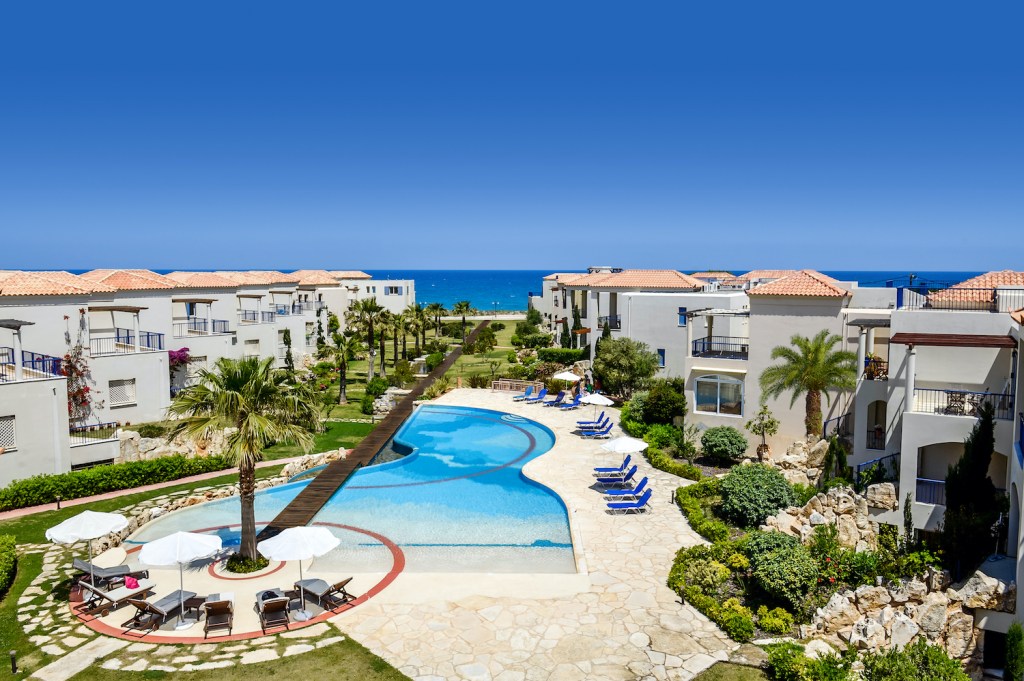
Yiannis Iliakis of Leptos Estates Greece, tells me: ‘We have lots of British and Chinese interest in this area where it’s possible to buy a new villa for just under €300,000.’ At €375,000 his company is selling new two-bedroom apartments at Aphrodite, a beachfront scheme 15 minutes from Chania.
Or you might buy a two-bedroom apartment with a great roof terrace for €170,000 – fully furnished and ready to move right into (or at least three months for the Greek purchase process).

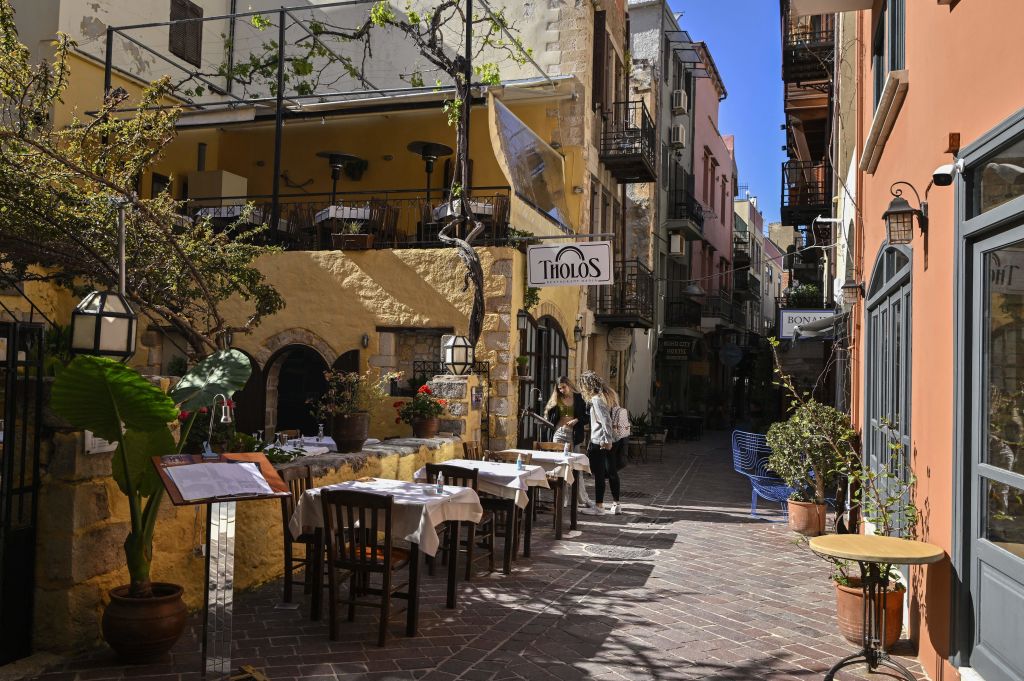




Comments